November 9, 2010
by Eti Bonn-Muller

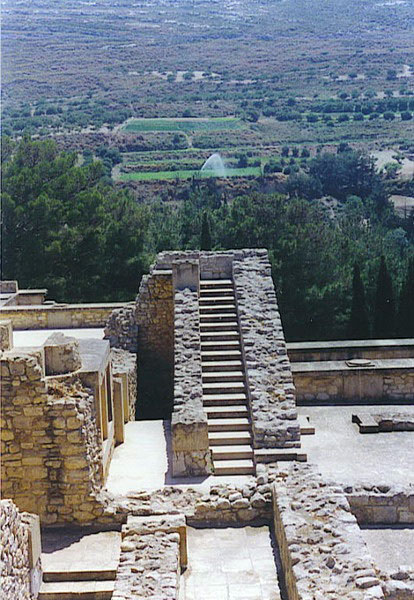
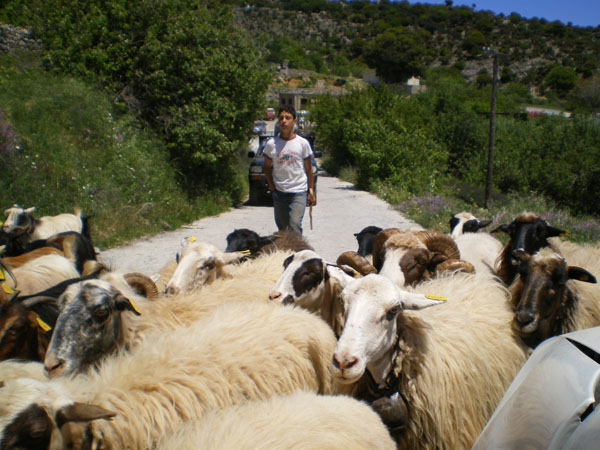
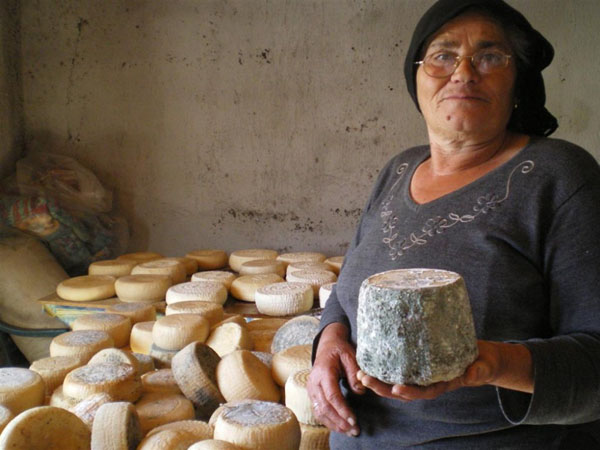
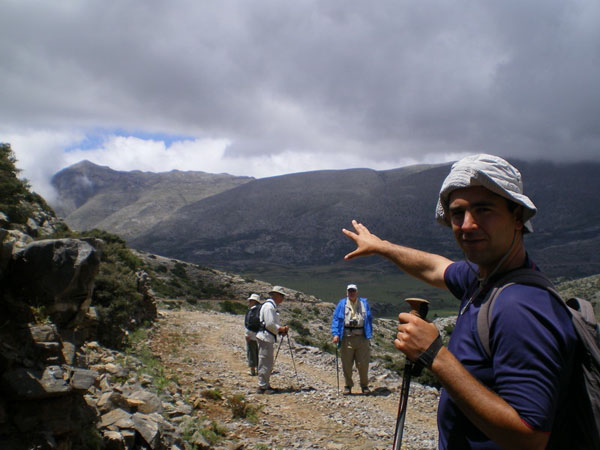
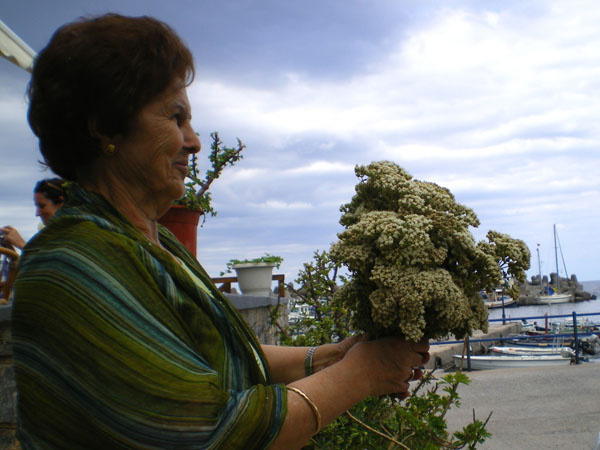
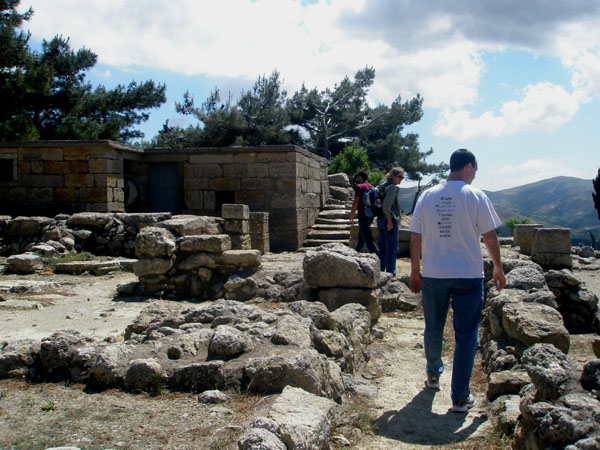
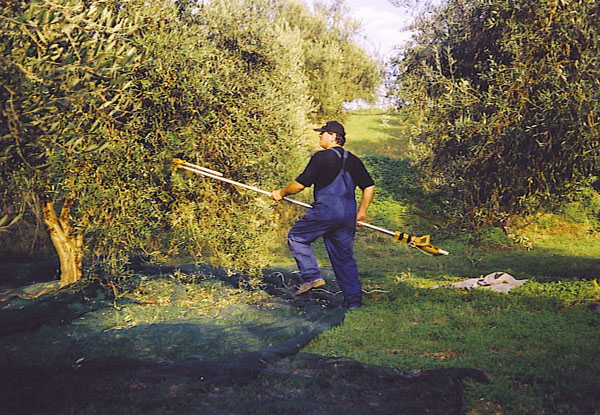
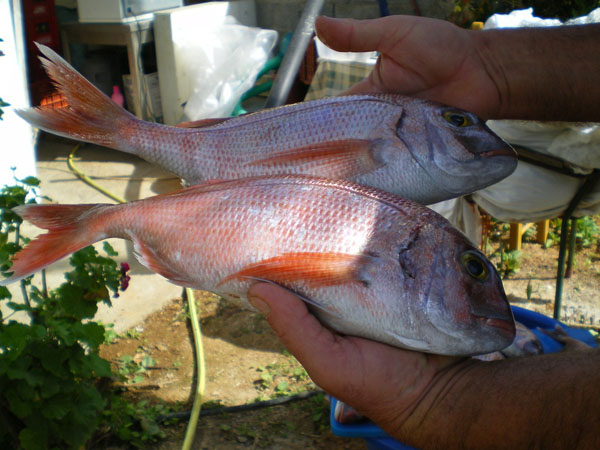
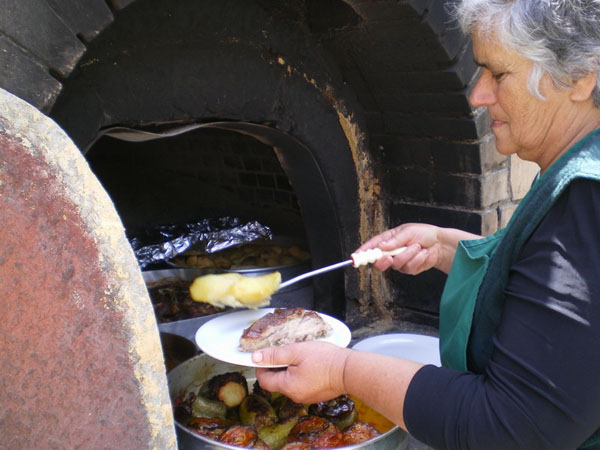
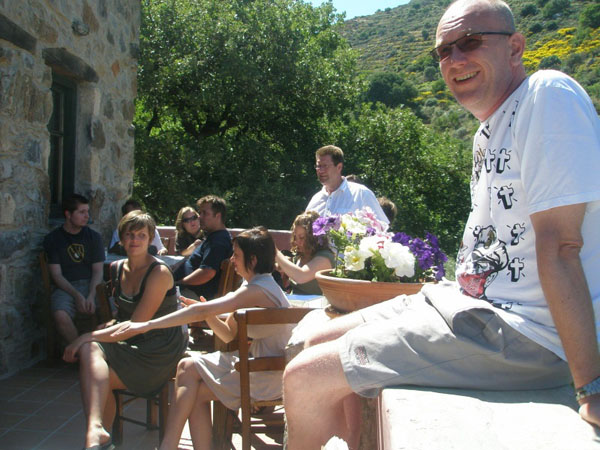
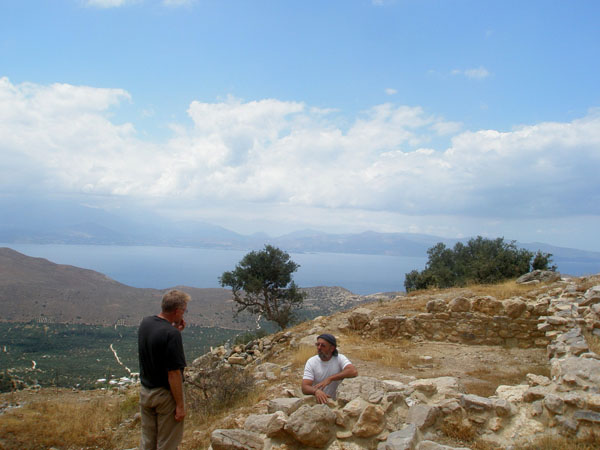
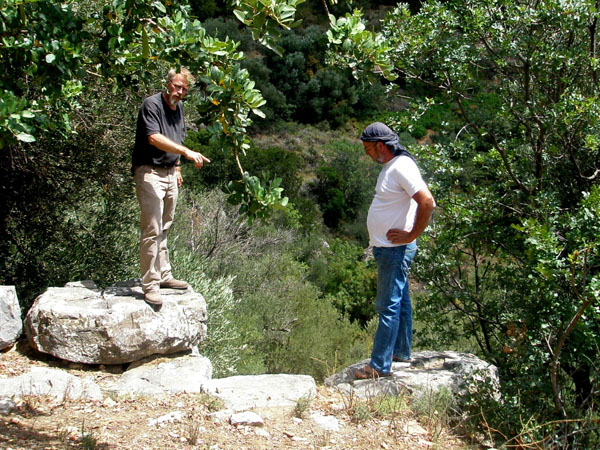
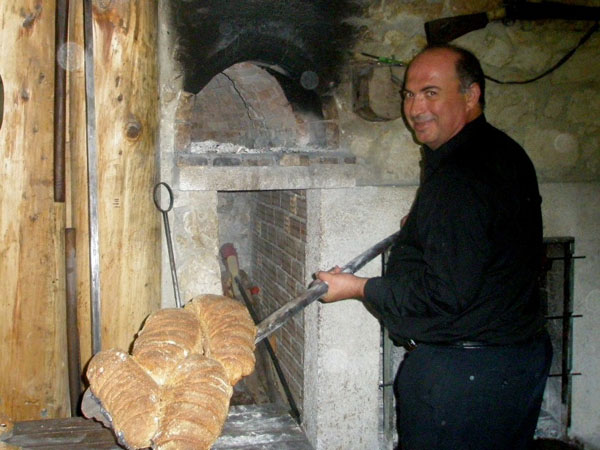
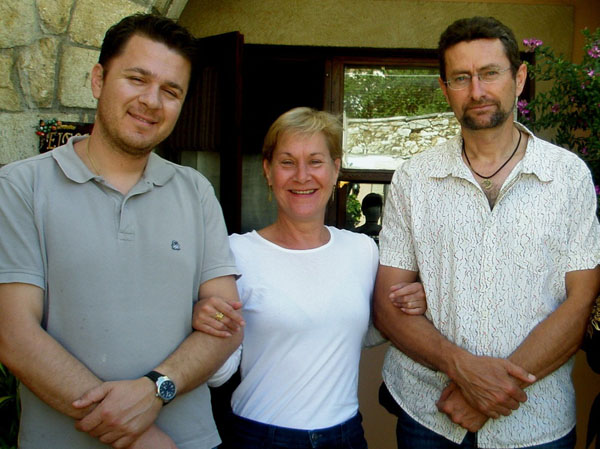
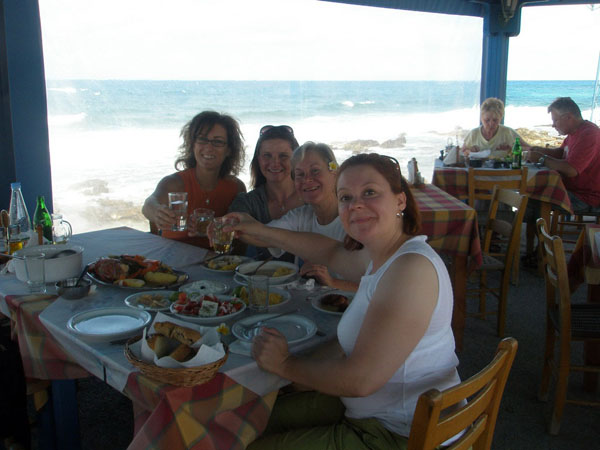
Chef-instructor Nikki Rose talks about the importance of protecting Crete’s natural and cultural resources—and how “green” the Minoans really were
A graduate of the Culinary Institute of America, Nikki Rose is a Greek American professional chef-instructor, writer, and seminar director. In 1997, she founded Crete’s Culinary Sanctuaries (CCS), an award-winning program for best practices in Responsible Travel. Made up of more than 40 local small businesses and individuals—archaeologists, artisan food producers, ecologists, historians, musicians, organic farmers, sustainable lodge owners, and many others—CCS organizes a range of dynamic seminars for the public and academic institutions. Classes are conducted on Crete at historic sites, in rural communities, and on organic farms. “After more than a dozen years of exploring Crete, I’m still learning and celebrating our cultural and culinary gifts,” she says. “These gifts are worth discovering and protecting for generations to come.”
The Cretan diet is famously healthy. What makes it so special?
Crete is blessed with fascinating history, natural beauty, and many healthy food choices from wild and cultivated sources. There is much to discover and enjoy. There is also much to protect. The traditional cuisine of Crete stems from respecting the Earth and the bounties it provides. The Minoans knew this but their opinion has been ignored for several thousand years. Nutritionists have been studying the health and dietary patterns of Cretans since the 1950s and their discoveries continue to make headlines. But it’s not just a diet; it’s a way of life. And unfortunately, the Cretan way of life is changing. On Crete, we enjoy a gorgeous array of wild flowers, some of which are endangered due to lack of conservation efforts. Our primary cooking oil is from the olive tree and many people produce their own oil. But olive trees suffered in 2010 due to the drought. I’m afraid to check for updates…
What can we learn from the Minoans?
Based on what we know, the Minoans were very “green.” Their religious beliefs and laws indicate they were smart enough to respect and protect the natural resources that sustain life—food and fresh water. Those who later occupied Crete were not always as respectful or wise.
Do archaeological discoveries guide your work?
Archaeological discoveries are an important part of our work. Knowing the evolution of food production helps us to understand the bigger picture today: not only in terms of food studies—what our ancestors ate—but whether the ancients cultivated or collected food in harmony with nature or not. CCS works with Professor Donald Haggis, of the University of North Carolina, and his team. Dr. Haggis has conducted excavations at the site of Azoria on Crete and at other sites in the region for more than 25 years. Our CCS summer study tours for academic institutions and our public seminars include guided tours led by him. Exploring ancient sites with excavation teams is a great privilege. We are excited to have this opportunity.
Why is Azoria of particular interest to you?
Azoria is a distinctive Early Iron Age and Archaic town [ca. 1200–500 B.C.]. The Azoria Project is a case study of Mediterranean urbanization in the first millennium B.C. The team focuses on agricultural practices, which provide a new window into our ancestors’ daily lives. Their findings help us understand how subsistence farming changed during the early formation of a city-state. This period of transition is still not well known. How and why did residents shift their way of living for this new model? Did new cultivation methods, cash crops, and trade change their society and environment for the better or worse? We can learn so much from ancient agricultural practices to apply realistically sustainable methods today.
How do you tie in archaeology with a CCS seminar?
The first day of a CCS seminar usually begins at the Minoan Palace of Knossos with a private guided tour led by a licensed historian who is very familiar with our curriculum. After our glimpse of Crete’s amazing past, we might venture off to a superb organic winery or farm to learn by “doing”—talking with the farmer-producers and enjoying their culinary delicacies. Or we might hike up to a mountain sanctuary or down a gorge with a wonderful botanist to enjoy the sights and scents of familiar and unfamiliar indigenous plants. If musicians have time to visit with us, we seize that special opportunity! Throughout our adventures, we visit fantastic chefs and artisan food producers for meals, discussion, and/or cooking demonstrations. What we experience each day ties into what is on our table. Our journeys on Crete, whether they are for a few days or weeks, lead us to people who bring the magic of their island to life. Tying the past with the present and the future in an interactive way with a wonderful group of teachers is a great experience for all of us.
Do you know if the Cretan diet has changed substantially since Minoan times?
Yes, to an extent. And archaeological discoveries are ongoing. We’ve learned that many plants we cultivate on Crete today were not known to the Minoans, at least not grown in their backyards. There is a long list of plants and exotic spices introduced on Crete after the Minoan period by resident-occupiers, explorers, and traders—sometimes, several thousand years later from the New World. And some flora and fauna the Minoans enjoyed are now extinct. But in general, we still eat many of the same foods today: fresh produce from wild and cultivated sources and products extracted from those sources: bread, olives, olive oil, wine, and vinegar, along with honey, grains, legumes, nuts, seafood, cheeses, and meats. However, what we consider basic culinary staples today—black pepper, cinnamon, rice, tomatoes, hot peppers—were out of reach geographically or economically, sometimes until very recently.
Do you know what would have comprised a typical Minoan meal?
I wouldn’t want to guess what all Minoans ate. It’s probably similar to today—the rich ate more exotic foods and meats. The poor ate more grains. What has been discovered in ancient palaces or cities is usually different from rural areas. A lot of excavation work is focused on palaces, so there’s still more to discover about rural life in different regions of Crete over time. That’s why projects like Azoria are so important. We know that people produced olive oil and wine here 4,000 years ago because their equipment has been discovered. But did the producers always get to use those products? Were they merchants, subsistence farmers, or slaves? It’s unlikely that everyone ate the same foods at any point in history and we don’t know much about the consequences of their dietary preferences or restrictions.
What do you know about the vessels that were used to prepare and serve food in ancient times? Are they similar to ones used on Crete today? Did they impact the taste?
Earth—clay, metals, and wood—and fire are elements that impart flavors into our food. We still roast meats using identical or similar techniques to the ancients. There is shallow-pit roasting, large-pit roasting, and underground roasting and braising. Natural sources of charcoal are scarce now. So cooking methods have changed. Some storage vessels and utensils the ancients used, such as those made from heavy metal, imparted flavors we wouldn’t experience today for safety reasons! You can roast lamb using something similar to a sword and prop it up on a couple of rocks above your fire pit, which we still do on Easter. No fancy equipment required. Of course, you need to know what you’re doing before you attempt ancient grilling techniques. That’s another story…Buy if you head to the mountains on Crete, you’ll see grilling and braising methods that are similar to—if not exactly the same as—the ones our ancestors used. If you head to a fishing port, you’ll enjoy wonderful, simply grilled fish straight off the boat.
How much have the key ingredients found on Crete “changed” since ancient times?
Crete was different 4,000 years ago. It was more lush, with forests, rivers, flora, and fauna that no longer exist. Residents and invaders have helped themselves to natural resources without concern for the permanent damage they caused. And the climate is always changing. Also, modern, conventional agriculture, using chemicals that are harmful to all living beings, was not practiced on Crete until the 20th century. Illegal, industrial over-fishing in Greece is a major problem, in addition to global water pollution. I don’t know how our small-scale fishers survive. In fact, many of them have given up fishing or fish just as a hobby now, which is unfortunate.
Yet we still enjoy many ingredients just as our ancestors did, as well as dishes that evolved from layers of history, discovery, and trade. There is still a lot of subsistence farming—urban and suburban gardens—and an increasing amount of small-scale commercial organic agriculture that is similar to ancient times. Most of our sheep and goats still have some territory to graze on wild plants that impart wonderful earthy flavors in our cheeses and yogurt. However, overgrazing is an issue. Holiday resorts and villas surrounded by fences don’t help either.
How so?
Ongoing irresponsible development threatens all of our culinary treasures and distinctive heritage. That’s why I think it’s crucial to protect what we still have, for our own selfish palates, if nothing else! We can do that by learning about how great food arrives at our tables and what we need to do to keep it that way, including supporting our organic farmers and small-scale fishers. Then we can truly celebrate! When we see a wild oregano plant for the first time, perhaps we know it’s a delicious gift from nature. If we actively work to protect our gifts instead of bulldozing or over-harvesting them, we’re doing ourselves a favor and leaving some good food for future generations to enjoy.
Through studying the Cretan diet, what is the most surprising thing you’ve learned?
That it is not a diet; it is a way of life. So many people on Crete know so much about traditional sustainable organic farming, food, and cooking. Not simply following a recipe for green beans or making a nice omelet—but they grow the beans and raise the chickens and produce the olive oil to prepare these delicacies. It’s truly amazing. Every culinary adventure is a surprise.
Why is it important to learn about preserving Crete’s natural and cultural resources?
Many people are capitalizing on Crete’s heritage without protecting it. Many people know the facts. Yet today, there is more unsustainable development-tourism on Crete instead of less. Our historic sites and natural areas are very vulnerable due to lack of protection and maintenance. Both residents and visitors will lose what they cherish if they do not make sustainable development and sustainable tourism their highest priority. The Minoans knew that respecting nature was a high priority: Existing on Earth 101. My hope is that more people acknowledge how important our cultural and culinary heritage is and work with us to help protect it. This is not a sacrifice. We’re doing ourselves a favor.
Read more about Crete’s Culinary Sanctuaries and learn how to be a responsible traveler in the AIA-ATTA Guide to Best Practices for Archaeological Tourism.